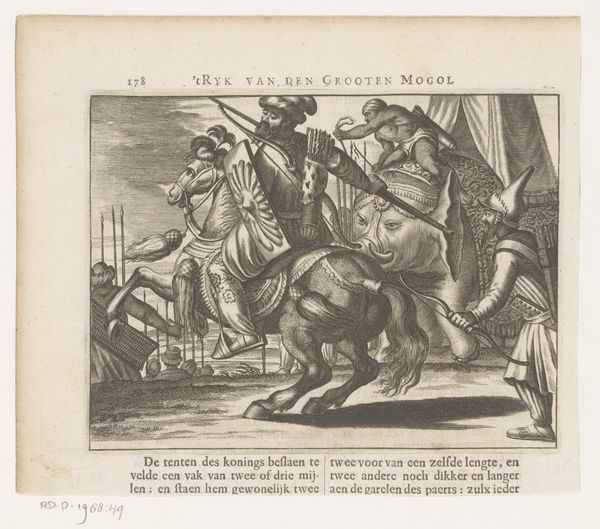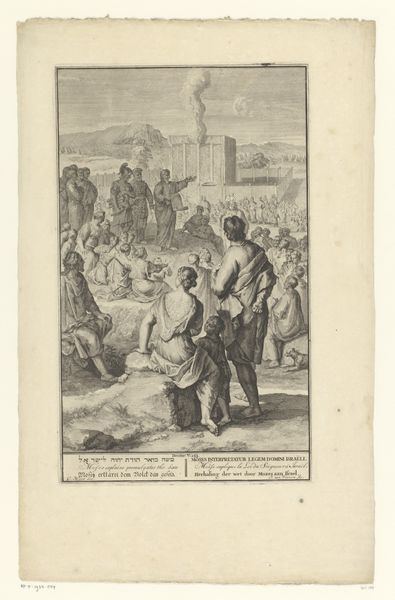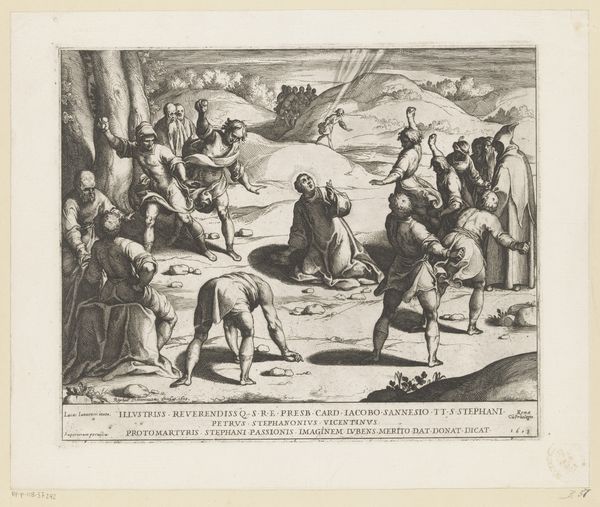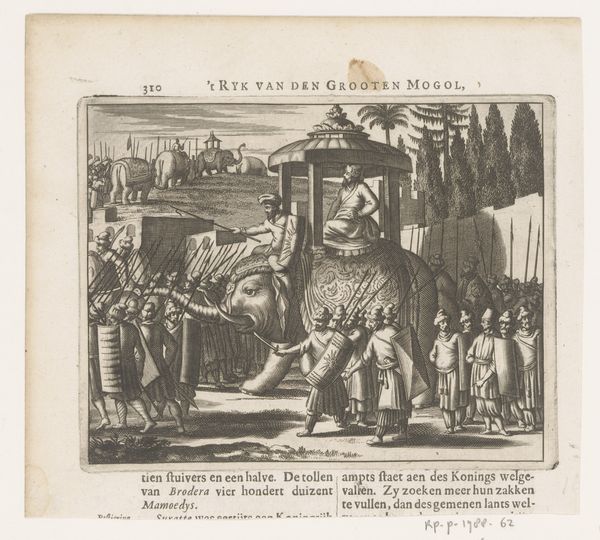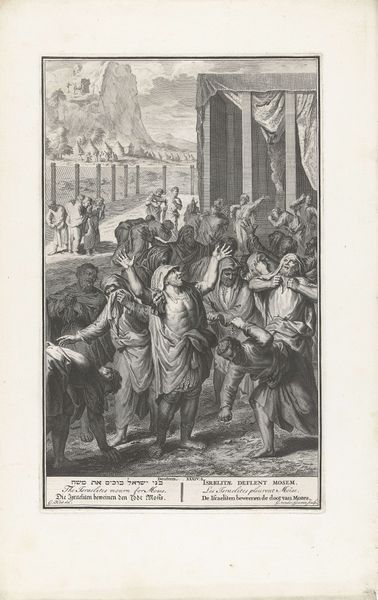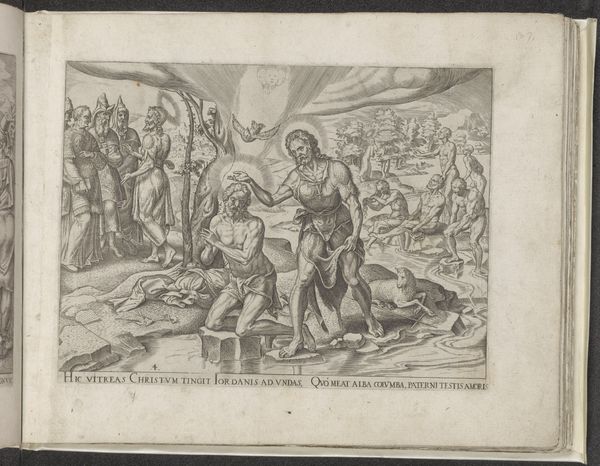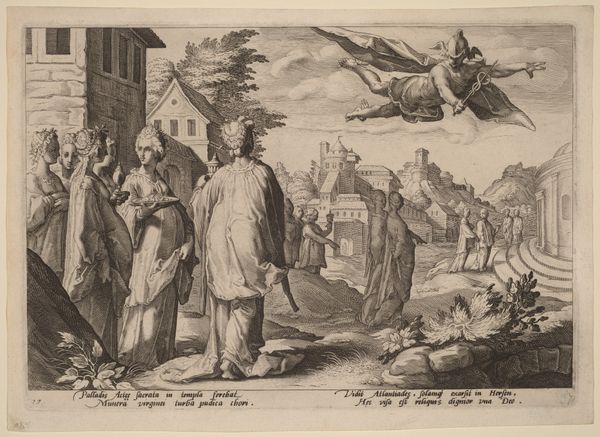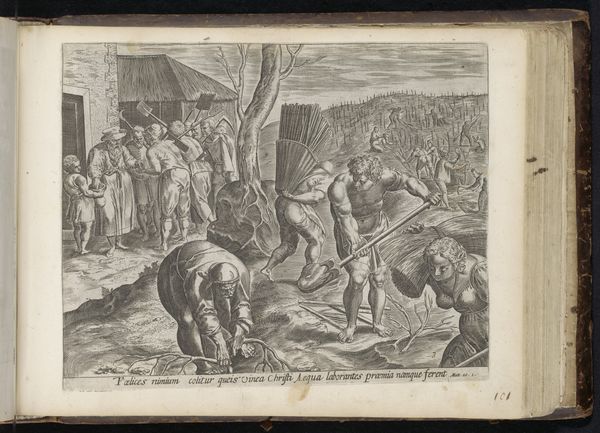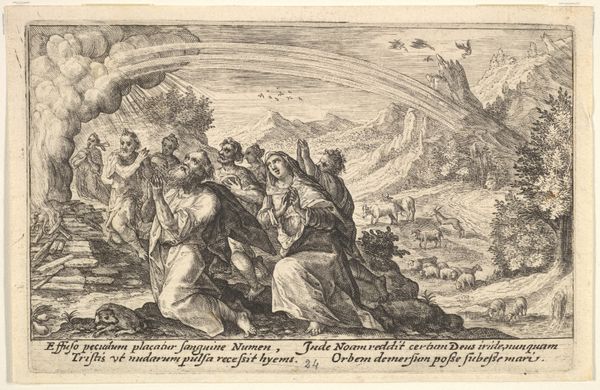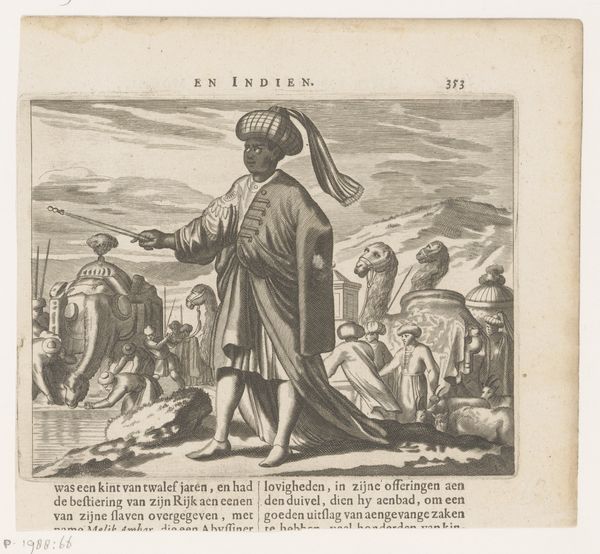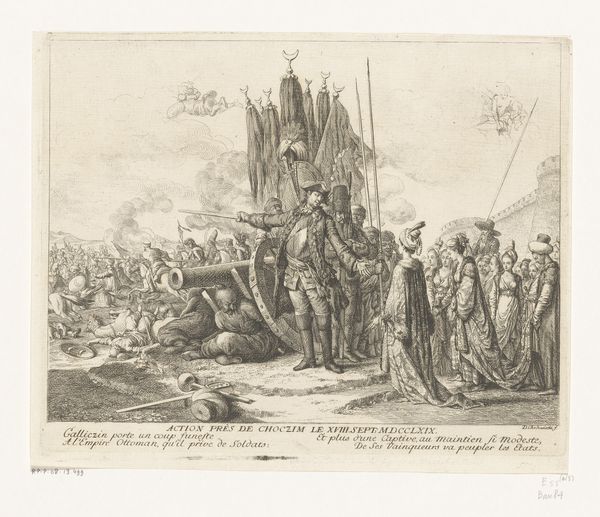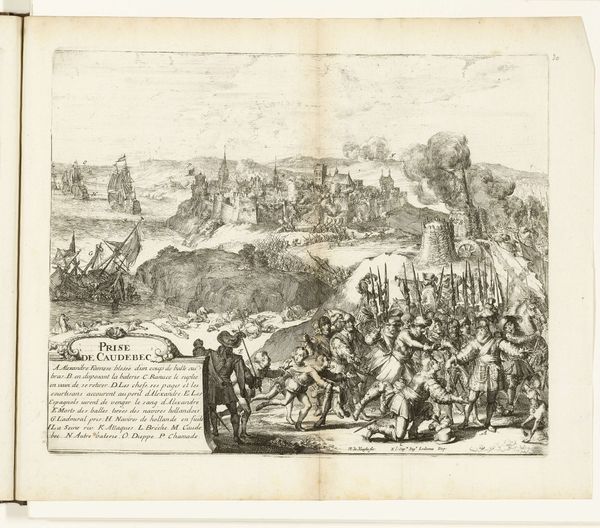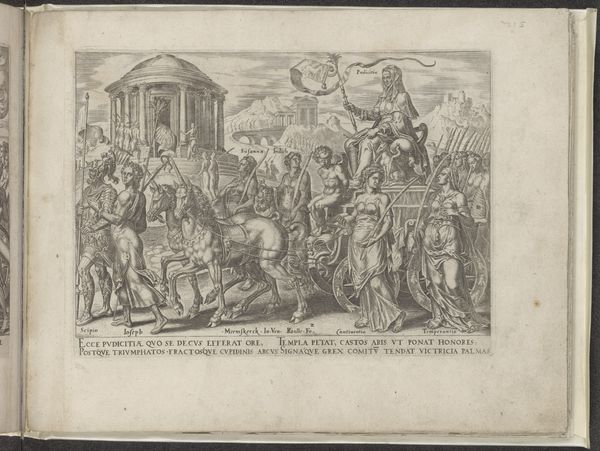
print, engraving
#
aged paper
#
medieval
#
narrative-art
#
parchment
# print
#
asian-art
#
old engraving style
#
personal sketchbook
#
ancient-mediterranean
#
line
#
sketchbook drawing
#
history-painting
#
engraving
Dimensions: height 121 mm, width 162 mm
Copyright: Rijks Museum: Open Domain
Curator: Here we have a fascinating print from 1672, currently held in the Rijksmuseum. The anonymous artist titled it "Feestelijke optocht tijdens het Holifeest," or "Festive Procession during the Holi Festival." It's an engraving on paper. Editor: The immediate impression is chaotic celebration. Look at the movement conveyed by the lines, almost frantic energy in this monochromatic image! And those tiered figures emerging from the land give this image a storylike impression of rising to a higher world. Curator: It’s fascinating how the print medium allowed for the dissemination of these images, shaping European perceptions of cultures like that of the Mughal Empire. Consider the paper itself, likely hand-laid, and the laborious process of engraving. Each line carefully etched, reproducing the image again and again. What can the printing itself convey beyond this snapshot of a celebration? Editor: The symbolism! Those jubilant figures on what might be mountains, or some elevated holy ground; what do you think that positioning says about social order and spiritual experience within their culture? Curator: Perhaps the European audience who consumed these prints perceived it that way, imbuing the scene with their own ideas of hierarchy. But the fact it's documenting a Holi celebration emphasizes something more primal—the breakdown of social order, the throwing of colors representing unity beyond hierarchies, at least temporarily. Editor: A compelling point, indeed. Still, the engraver's interpretation filters that through a specific lens. And what does the "Ryck van den Grooten Mogol" text convey—beyond simply the geographical and imperial source of inspiration? Curator: Precisely—the choice of this scene highlights a moment of, seemingly, cultural 'otherness,' which, then, the text positions as clearly situated and ruled by a figure whose power and culture were objects of European colonial interest at that historical moment. Editor: So the visual record captured here offers a cultural encounter that might, perhaps, even inspire further colonial desire! A true object of study that can convey multiple points of view and interpretations from cultural perspectives through symbolic representation! Curator: Absolutely. And when you consider the skill and time required to produce an engraving, this artwork underscores how labor is translated across cultural exchange as well. Editor: Seeing through the lenses of material conditions, and enduring visual symbolism! Both allow us to reflect critically on these early forms of visual cultural exchange. Curator: A remarkable combination to understanding how these material processes intersect to make our world more complete!
Comments
No comments
Be the first to comment and join the conversation on the ultimate creative platform.
